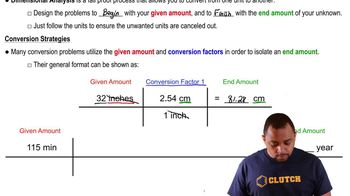By referring only to the periodic table, select (d) the element in the group K, C, Zn, F that is most likely to form an ionic compound with Ba.
Ch.8 - Basic Concepts of Chemical Bonding
Chapter 8, Problem 42c
Arrange the bonds in each of the following sets in order of increasing polarity: (c) C—S, B—F, N—O.
 Verified step by step guidance
Verified step by step guidance1
Identify the concept of bond polarity: Bond polarity is determined by the difference in electronegativity between the two atoms involved in the bond. The greater the difference, the more polar the bond.
List the electronegativities of the elements involved: Carbon (C) = 2.55, Sulfur (S) = 2.58, Boron (B) = 2.04, Fluorine (F) = 3.98, Nitrogen (N) = 3.04, Oxygen (O) = 3.44.
Calculate the electronegativity differences for each bond: C—S, B—F, and N—O.
Compare the electronegativity differences: The bond with the smallest difference is the least polar, and the bond with the largest difference is the most polar.
Arrange the bonds in order of increasing polarity based on the calculated electronegativity differences.

Verified video answer for a similar problem:
This video solution was recommended by our tutors as helpful for the problem above.
Video duration:
2mWas this helpful?
Key Concepts
Here are the essential concepts you must grasp in order to answer the question correctly.
Electronegativity
Electronegativity is a measure of an atom's ability to attract and hold onto electrons in a chemical bond. The greater the difference in electronegativity between two bonded atoms, the more polar the bond will be. For example, fluorine is the most electronegative element, which significantly influences the polarity of bonds involving fluorine.
Recommended video:
Guided course

Electronegativity Trends
Bond Polarity
Bond polarity refers to the distribution of electrical charge across a bond between two atoms. A polar bond occurs when there is a significant difference in electronegativity between the two atoms, leading to a dipole moment. Nonpolar bonds, on the other hand, occur when the electronegativities are similar, resulting in an even distribution of charge.
Recommended video:
Guided course

Molecular Polarity
Comparative Bond Analysis
Comparative bond analysis involves evaluating the bonds in a set based on their polarity by comparing the electronegativities of the atoms involved. By determining the electronegativity values for each atom in the bonds C—S, B—F, and N—O, one can rank the bonds from least to most polar, providing insight into their chemical behavior.
Recommended video:
Guided course

Dimensional Analysis
Related Practice
Textbook Question
1
views
Textbook Question
Which of the following bonds are polar? (a) C—O, (b) Sl—F, (c) N—Cl, (d) C—Cl. Which is the more electronegative atom in each polar bond?
Textbook Question
Arrange the bonds in each of the following sets in order of increasing polarity: (a) C—F, O—F, Be—F (b) O—Cl,S—Br, C—P
Textbook Question
(a) From the data in Table 8.2, calculate the effective charges on the H atom of the HBr molecule in units of the electronic charge, e.
4
views
Textbook Question
(b) If you were to put HBr under very high pressure, so its bond length decreased significantly, would its dipole moment increase, decrease, or stay the same, if you assume that the effective charges on the atoms do not change?
Textbook Question
The iodine monobromide molecule, IBr, has a bond lengthof 249 pm and a dipole moment of 1.21 D. (a) Which atom ofthe molecule is expected to have a negative charge?
